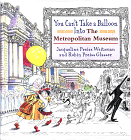Carol Hurst's Children's Literature Newsletter
Fall 1998. Page 3.
Written by Carol Hurst. Edited by Rebecca Otis.
|
This issue is sponsored by Teaching K-8 Magazine. Subscribe now for only $12.00 |
Book Reviews

A picture book with more than a little history and a bit of holiday fun for kids from second grade up is Emily Arnold McCully's An Outlaw Thanksgiving (Dial, 1998 ISBN 0803721978. Hardcover.) McCully's watercolors are rich in detail as she tells of an exciting train trip that might have taken place a hundred years ago.
Clara Maher and her mother are traveling coach class on a train bound for California where they are to join her father and a new life. Her mother is cautious, untrusting of strangers, but Clara is excited by everything she sees. Clara's openness serves them in good stead when the train is stranded by a snowstorm high up in the Rockies. The bitter cold makes staying on the train impossible as they wait to be plowed out and a well-dressed stranger, Mr. Jones, with Clara's help, persuades her mother to allow them to go with him to Brown's Hole, a large house far into the mountains.
There a large group of people greets them cordially and a Thanksgiving feast is celebrated. However, observant Clara had noticed a "Wanted" poster in one of the stations and she knows that the genial Bob is Butch Cassidy, the famous outlaw. Indeed, most of the group are outlaws of one kind or another. Wisely, she refrains from announcing her discovery to her mother but she can't resist letting Mr. Cassidy know that she has identified him.
The book opens with a map of their journey and so the link to map skills is evident. Some children may have seen the movie "Butch Cassidy and the Sundance Kid" and may enjoy telling the others what they remember from the film. The costumes, modes of transportation and entertainment also offer opportunities for further exploration.

Another picture book with ties to social studies, if not history, is You Can't Take a Balloon Into the Metropolitan Museum by Jacqueline Preiss Weitzman and Robin Preiss Glasser (Dial, 1998 ISBN 0803723016. Hardcover.). Best appreciated by those who have visited New York City if not the museum itself, it is nevertheless so well done that others may also enjoy it.
In this wordless book, a little girl holding a large yellow balloon and an older woman who is probably her grandmother are about to enter the museum when they are stopped by a museum guard. After considerable negotiation, the guard ties the balloon to a railing and the little girl and her grandmother are off to investigate all the treasures of the museum.
Almost immediately, the balloon is untied by a very clever pigeon who flies off with it. The guard and, eventually, many others follow in pursuit of the balloon. From then on we follow two trails: that of the balloon and that of the little girl and her grandmother. There are many parallels in those trails as whatever work of art they are viewing is echoed, albeit with distortion, by the balloon scene.
For instance, as grandmother and child view the statue of Perseus holding aloft the severed head of Medusa, the guard chases the balloon past a zookeeper holding a fish aloft for the seals and the pose is very similar.
The illustrations make good use of full color figures against backgrounds done with black and white sketches. The effect is to move the plot along while giving careful observers further information about where they are and what's going on. This is a book to use with kids from kindergarten up for the fun of it and with older kids for the information on New York City, the Metropolitan Museum of Art and the work of the masters.

There's a new entry into the field of tongue-in-cheek fables done by those sly twisters of tales, Jon Scieszka and Lane Smith. Squids Will Be Squids (Viking, 1998 ISBN 067088135X. Paperback.) gives us eighteen short and snappy fables with the prerequisite morals. An opening spread gives us a bit of background about fables and even Aesop himself that manages to be both factual and funny. Then we're off to the modern fables.
Children who have trouble seeing any practical application to such Aesop fables as "The Dog in the Manger" will have little trouble recognizing the behavior of people they know here. "Frog's New Shoes", for instance, tells of how Frog, after watching a commercial in which the wonders of skateboard shoes are extolled, and in which several feats the shoes make possible are demonstrated, dashes out and buys the shoes. He, of course, fails miserably and, as he lies on the pavement, a cat skates over and says, "Nice shoes." The moral? "Everyone knows frogs can't skateboard, but it's kind of sad that they believe everything they see on TV."
Have fun with the book and then revisit some earlier twisted fables such as those by Arnold Lobel and Florence Parry Heide.
![]()
Go to Next Section of Newsletter, Featured Author: Jean Fritz.
Return to Table of Contents of the Newsletter.
Advertisement:
Advertisement:
Advertisement:

